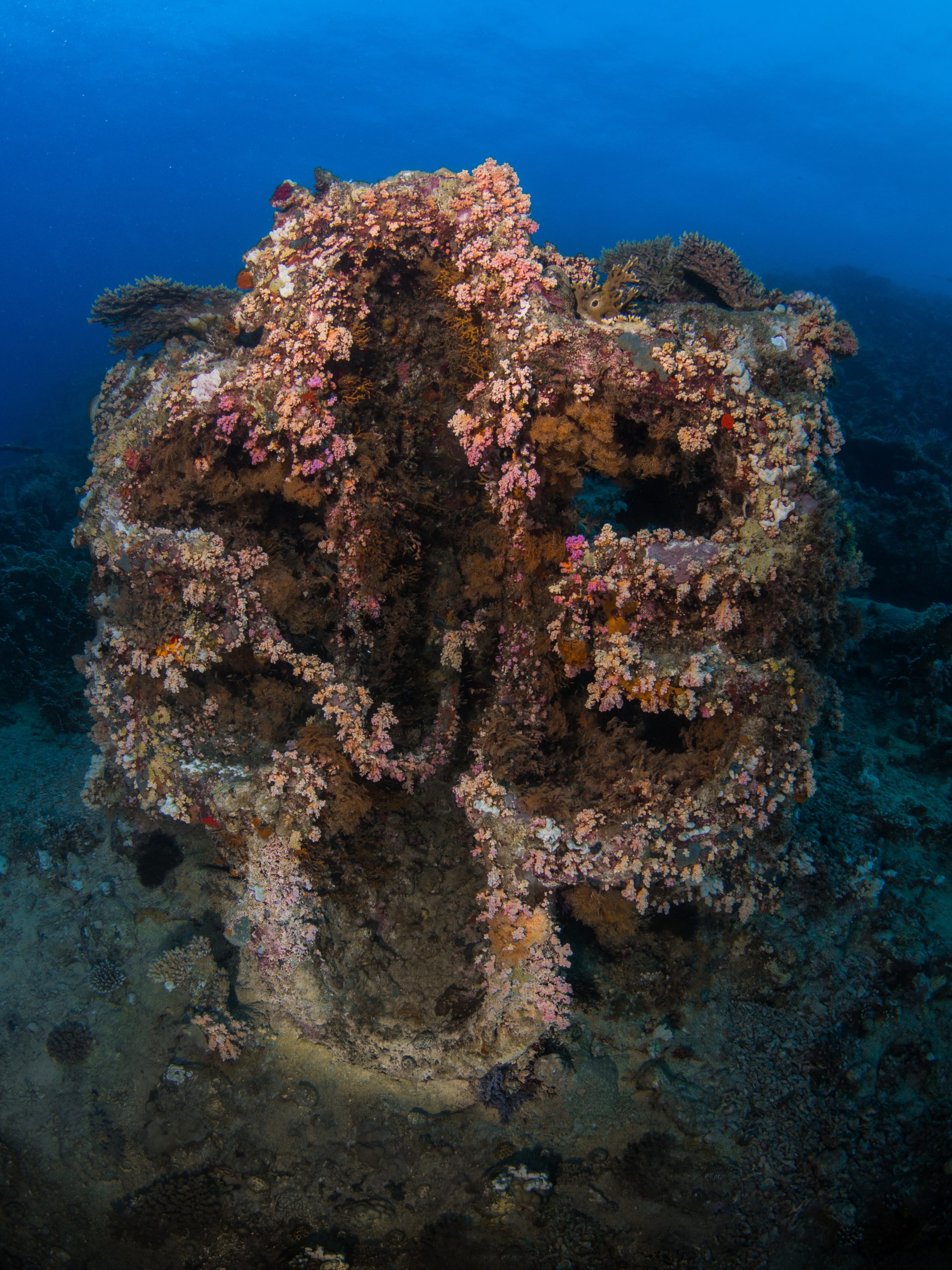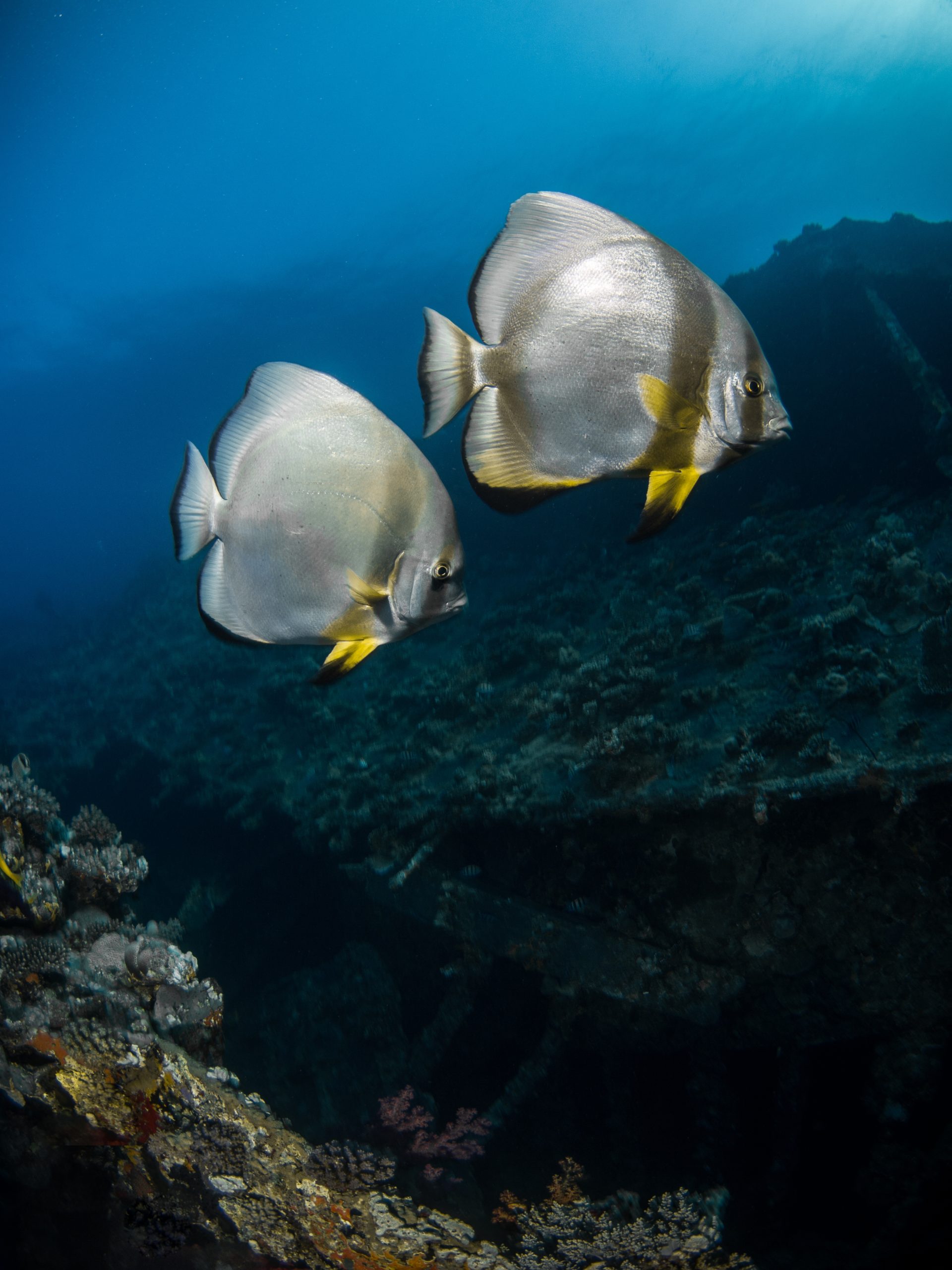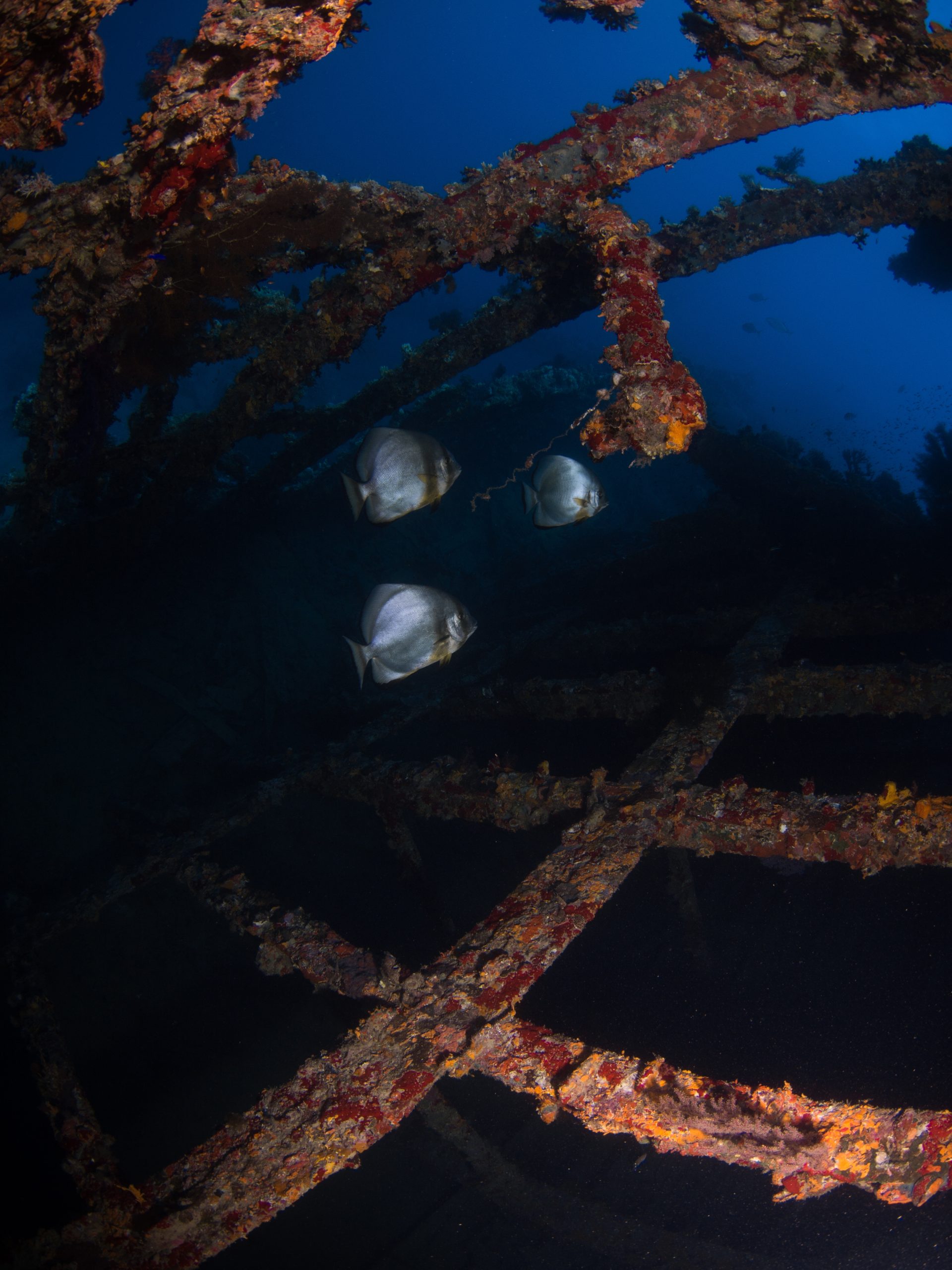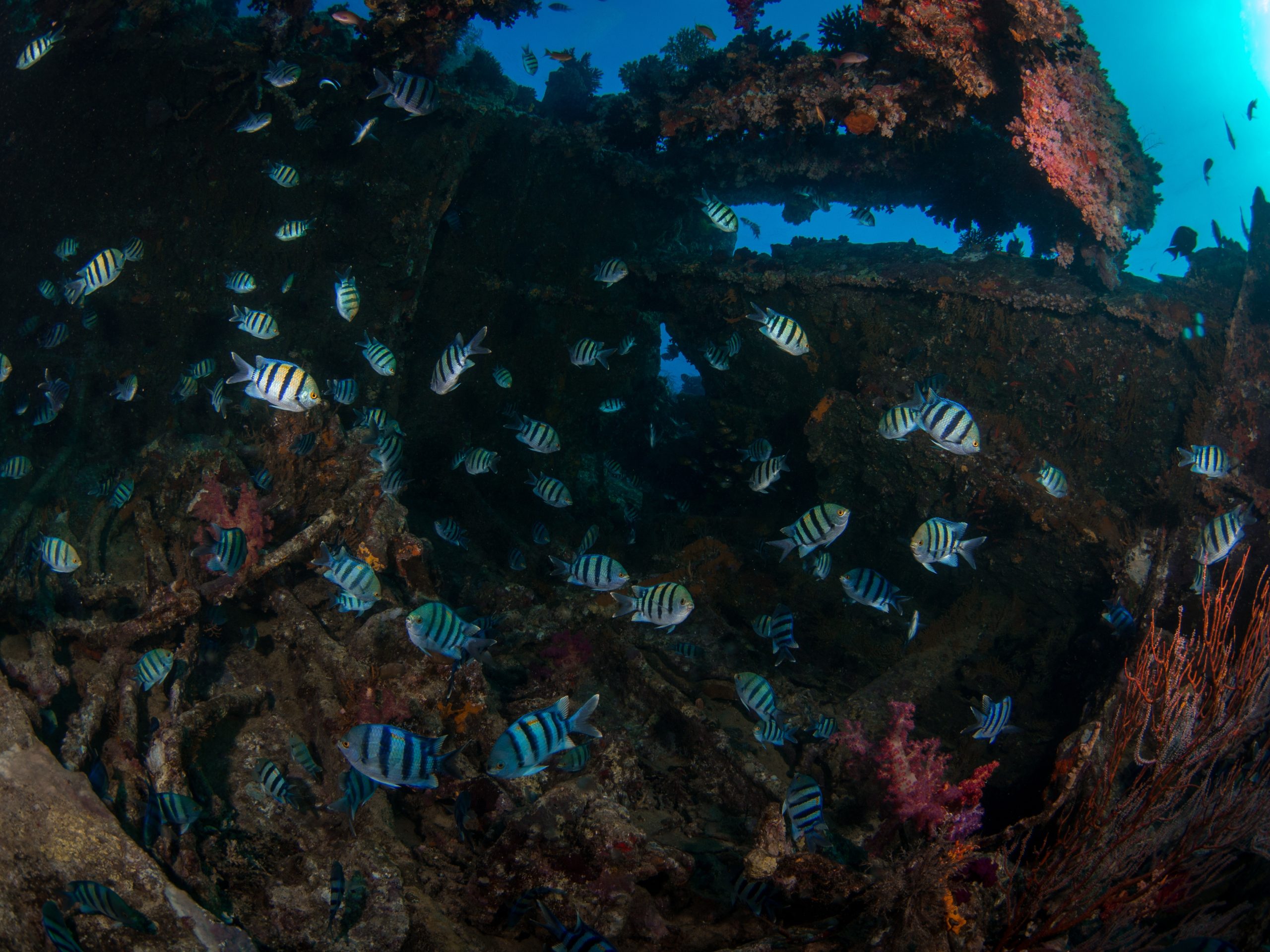Dive The Ulysses Wreck: An Outstanding Red Sea Adventure
- Written:
- By Christian Llewellyn
Some of the links on this page may be affiliate links. If you click on them and make a purchase, we may earn a small commission at no extra cost to you. This helps us continue our work—thank you for your support!
Introduction to the The Ulysses wreck
The Ulysses, a British iron screw steamer built in 1871, has captivated divers since its discovery off the coast near Gubal Island in the Red Sea. This 95.1-metre vessel, renowned for its 19th-century engineering, now lies serenely on its port side enveloped by marine life. For those looking to Dive Ulysses Wreck Red Sea, it offers a unique blend of historical intrigue and vibrant underwater scenery, making it a prime location for both experienced divers and marine photographers.
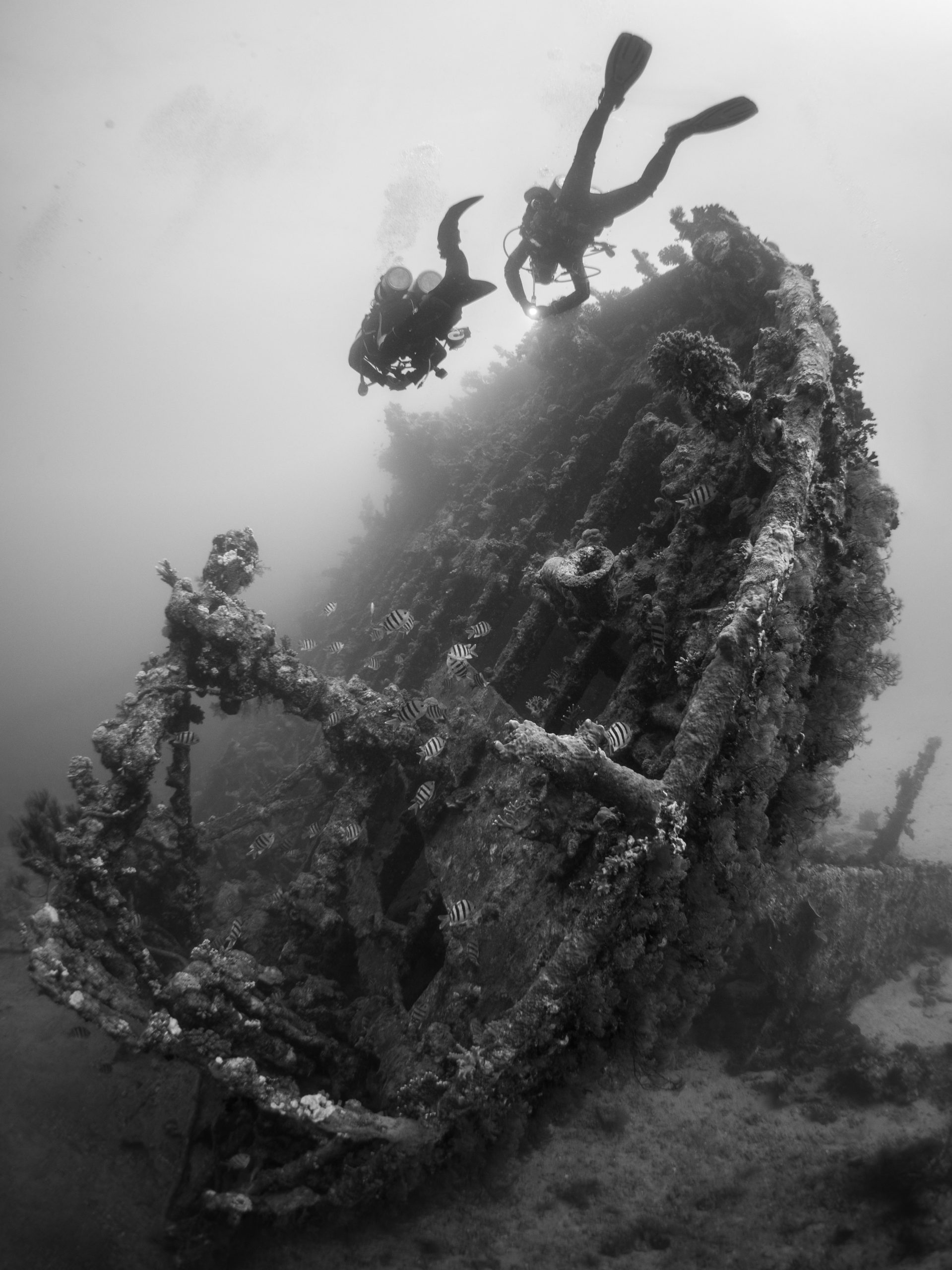
The Story Behind the The Ulysses
The SS Ulysses began its service as a cargo ship, engaging in significant trade voyages like its 1887 journey from London to Penang with a cargo of copper wire and isolators. Its fate was sealed on August 16, 1887, when it struck the coral reef of Gubal Seghir in the Red Sea shortly after departing from Suez. The impact was initially assessed as minor; however, the combination of rough seas and prolonged exposure to the elements led to irrevocable damage. Despite hopeful efforts involving the British steamer Kerbela and the crew of HMS Falcon, the ship sank stern-first into the depths, where it eventually settled by the reef’s northern face.
Rediscovered in 1993 by divers from Sharm El-Sheikh, the Ulysses wreck now rests between 4 and 28 metres under the surface. This depth provides an accessible yet compelling dive site. The wreck itself, with its intact boilers and cargo holds, alongside typical Red Sea marine life such as corals and reef fish, offers a window into the perils maritime vessels faced navigating these waters in the 19th century. Remarkably, there were no fatalities associated with the sinking, a testament to the effective rescue and abandonment efforts at the time.
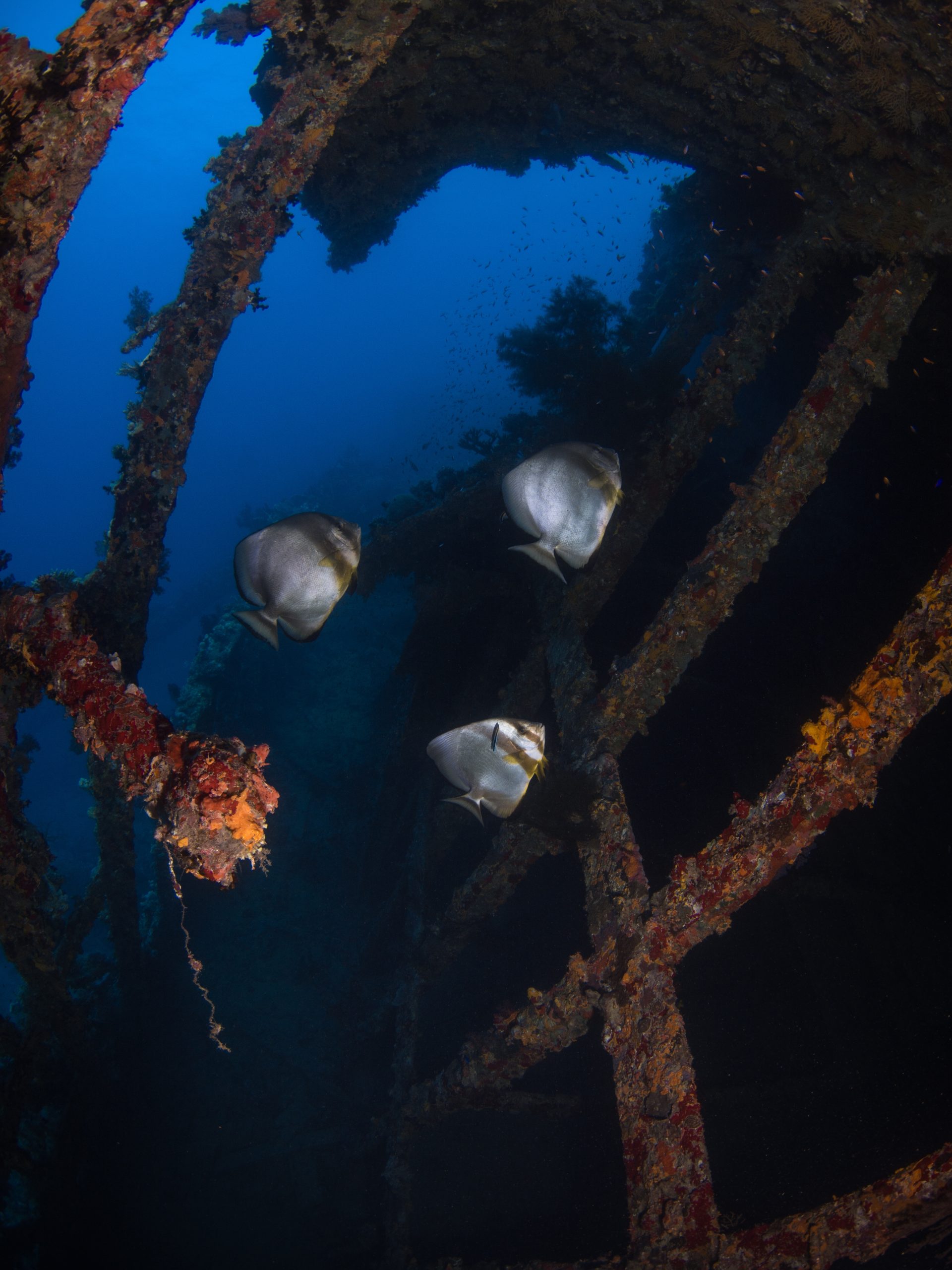
The Stats: Depth, Conditions & Accessibility
15m
Minimum Depth
25m
Maximum Depth
Boat Dive
Dive Type
30m
Visibility
Apr – Oct
Season
22°C - 30°C
Water Temp
Where Is The The Ulysses?
The Ulysses Wreck is located in the northern part of the Red Sea, off the coast of Egypt, near the town of Hurghada. This area is known for its clear waters and rich marine life, making it a popular destination for divers. The nearest major airport is Hurghada International Airport, which serves both international and domestic flights. Travel to the dive site typically involves a boat trip, as the wreck lies a few kilometers offshore. Most divers access this site through organized dive tours operating out of Hurghada or other nearby coastal towns.
My Experience Diving The The Ulysses
My dive into the Ulysses wreck in the Red Sea was truly a memorable experience. As we geared up, excitement buzzed among our group, facilitated by the crew from our chosen dive company, known for their expertise in handling wreck diving. Entry into the water was a giant stride off the stern of the boat, plunging into the warm, clear waters of the Red Sea.
Descending towards the Ulysses wreck, which sank in 1887 near Gubal Island, was like travelling back in time. Visibility was excellent, allowing us to appreciate the full grandeur of the wreck covered in vibrant marine life. Our dive was carefully paced, respecting the depth and structural integrity of the wreck, ensuring every safety protocol was in place. The highlight, undoubtedly, was swimming through the cargo hold, a surreal experience amplified by the beams of light penetrating through openings.
Post-dive, our surface interval was spent discussing the dive and the wreck’s history, making the experience as educational as it was thrilling. The journey back to the shore was smooth, filled with conversations of the spectacular scenes and planning for future dives at other Red Sea wreck sites.
My Experience Photographing the The Ulysses
Photographing the Ulysses wreck in the Red Sea was an exhilarating challenge, melding the stark beauty of maritime history with the vivid marine life of Gubal Island. The first thing that strikes you is the impressive silhouette of the ship, settled below the waves since 1887. Each dive to capture the perfect shot was a dive into the past, with the wreck surrounded by schools of fish that seemed to dance in and out of the broken beams and scattered debris. Using a wide-angle lens, I aimed to encompass the overwhelming size of the wreck while also highlighting the vivid coral growth that has claimed it as part of the sea’s living tapestry. The lower light conditions inside the wreck required careful adjustment of settings to capture the eerie, yet awe-inspiring interior views.
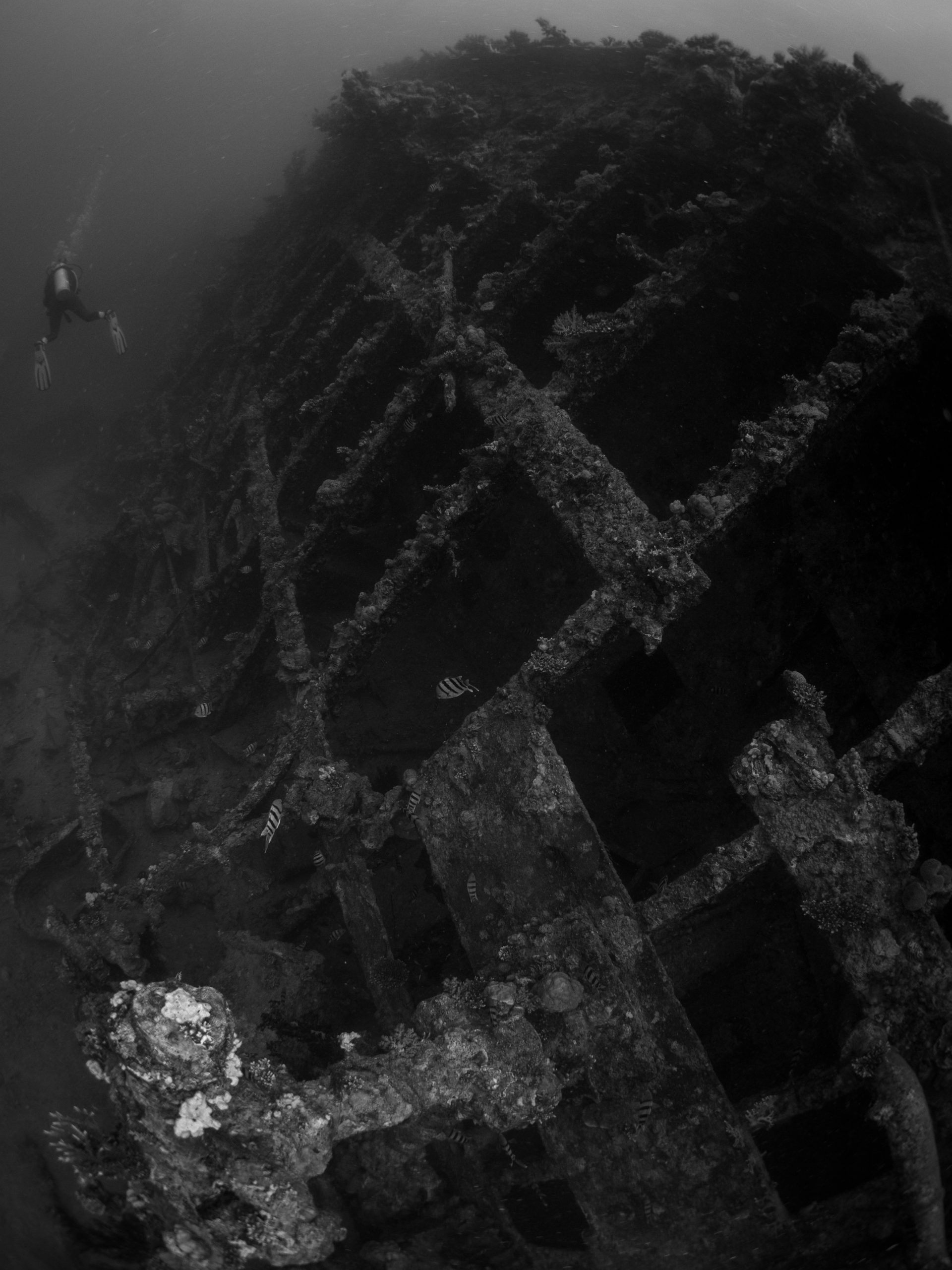
What You’ll See: Wreck Features & Marine Life
The Ulysses wreck, now a vibrant artificial reef, hosts a mesmerizing array of marine life. Expect to see schools of vibrant fish darting around the coral-covered structure; lionfish and moray eels make frequent appearances amidst the shadows. Coral formations on the wreck have grown over the years, providing a colorful backdrop to the rusting steel.
As for wreck enthusiasts and photographers, the well-preserved machinery and the layout of the Ulysses make it a captivating subject. The visibility in this part of the Red Sea enhances the diving photography experience, making every shot worthy of a postcard. For those interested in maritime history, the dive offers an intimate view of a 19th-century vessel adapting to the underwater world.
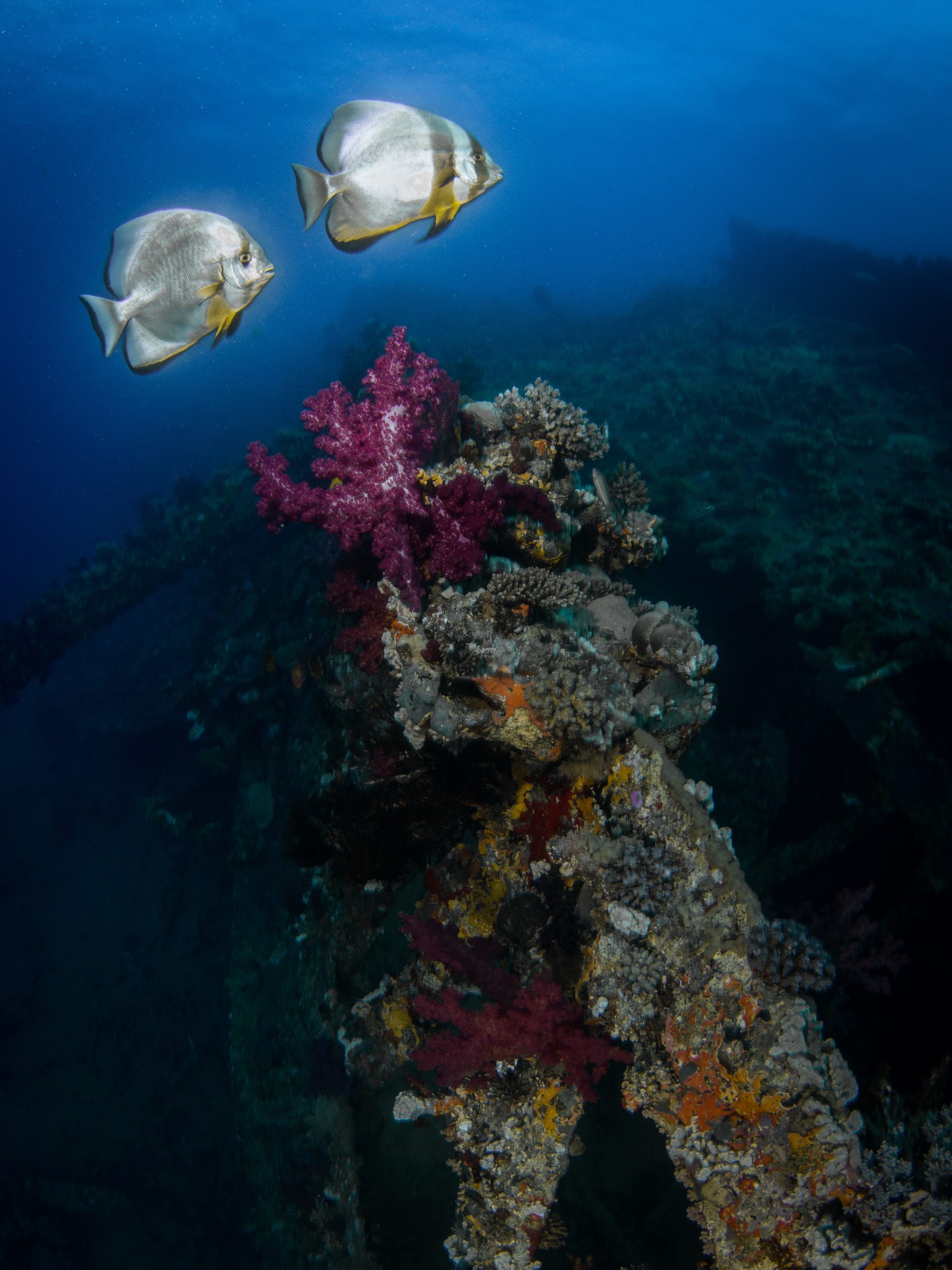
Recommendations for Diving the The Ulysses
1. Ensure you have appropriate certification for wreck diving before attempting this dive.
2. Study the layout and history of the wreck to enhance your dive experience and safety.
3. Check and double check all your gear, especially your torch, as visibility may be low inside the wreck.
4. Keep a clear line of sight to the exit when venturing inside the wreck to prevent disorientation.
5. Maintain a slow and steady pace to conserve air and reduce silt disturbance.
6. Use a dive line or reel when exploring more complex sections of the wreck.
7. Be mindful of sharp edges and entanglement hazards such as fishing lines or nets.
8. Monitor your air supply regularly, ensuring you leave enough reserve for an ascent in case of emergency.
9. Dive with a buddy for safety and communication purposes; never dive a wreck site alone.
10. Respect the wreck site by not taking souvenirs, avoiding touching or displacing parts of the wreck, and observing marine life without interference.
Tips for Photographing the The Ulysses
1. Use a wide-angle lens to capture the entirety of the wreck’s impressive structure along with the surrounding seascape.
2. Adjust your white balance manually to compensate for the blue tint of the underwater environment, ensuring that the colors of the coral and marine life pop against the backdrop of the wreck.
3. Employ a high ISO setting and consider using underwater strobes to illuminate the darker areas, especially when photographing the interior of the wreck.
4. Maintain a slow and steady approach to avoid stirring up sediment, which can obscure your shots and disturb the marine life.
5. Focus on smaller details such as coral growths, rust patterns on the metal, and marine creatures inhabiting the wreck to add interest and narrative depth to your photos.
6. Always plan your dives with safety in mind, especially when entering enclosed spaces within the wreck.
7. Lastly, play with different angles and compositions; the robust structure of the Ulysses offers numerous dramatic viewpoints, both from a distance and up close.
Practical Dive Info & Booking a Trip
For those looking to experience the Ulysses wreck, I recommend booking with Dive Pro Gubal Island or Red Sea Explorers. These operators are well-known for their professionalism and exceptional service. Expect to pay approximately €100-150 for a two-tank dive, which typically includes equipment rental, boat fees, and guide services. Remember to always dive responsibly; observe but do not touch the historical structures or the marine life to help preserve the site for future divers. Respect the underwater environment to maintain the ecological and historical integrity of the Ulysses wreck.
My Rating & Final Thoughts
Reflecting on my dive at the Ulysses wreck in the Red Sea, this site truly offers a remarkable journey into the past fused with an exhilarating underwater experience. The visibility of the wreck paired with the abundant marine life that has taken residence in its structure provides a captivating dive every time. From the rich maritime history embedded within its corroded walls to the vibrant aquatic life that flourishes around it, the Ulysses wreck is a dive site that appeals both to history buffs and nature lovers. The blend of historical allure and natural beauty made this dive not just memorable but also incredibly photogenic, deserving a high rating.
8/10
Frequently Asked Questions (FAQs)
The best time to dive at the Ulysses wreck in the Red Sea is between June and September when the water temperatures are warm and visibility is highest. During these months, you can enjoy extended bottom times due to the warmer waters.
Divers at the Ulysses wreck can expect to encounter a variety of marine life including large schools of fish, colorful corals that have formed on the wreckage, moray eels, and occasionally, pelagic species. The ecosystem around the wreck is vibrant, supporting both small critters and larger marine animals.
Due to the depth and nature of the wreck dive at Ulysses, it’s recommended to use a dive computer and a good quality underwater torch. Advanced recreational divers often use nitrox to extend no decompression limits at these depths.
There are several reputable dive operators in the Red Sea region that offer trips to the Ulysses wreck. It’s advisable to choose operators who have experience with wreck diving and prioritize safety, such as Red Sea Diving Safari or Emperor Divers.
Divers should have adequate wreck diving experience or be accompanied by a qualified guide. It’s crucial to check all equipment before diving, follow dive plans, and respect limits of training and experience. Good buoyancy control is essential to prevent silt disturbance and preserve visibility.
The Ulysses wreck lies at a depth of approximately 30 meters. This site is generally recommended for intermediate to advanced divers due to its depth and the potential for strong currents.
Divers should avoid touching or taking any artifacts from the wreck to preserve the site for future generations. Maintain good buoyancy to avoid damaging the coral growth on the wreck, and do not disturb the marine life. Always adhere to no-trace principles.
Diving the Ulysses wreck can be a somber experience as divers explore the history and artifacts submerged in the depths. The ambiance of the wreck, paired with the marine life it supports, often leaves divers with a poignant sense of awe and respect for the ocean.
Visibility at the Ulysses wreck can vary, but it typically ranges from good to excellent, particularly in the summer months. Currents can be strong at times, which makes it important for divers to be well-prepared and check current conditions before the dive.
The Ulysses wreck is a must-visit due to its rich history, having sunk in 1887, and the vibrant marine ecosystem that has since evolved around it. It offers divers a unique opportunity to explore an historical underwater site that is teeming with life and enveloped in mystery.
Some of the links on this page may be affiliate links. If you click on them and make a purchase, we may earn a small commission at no extra cost to you. This helps us continue our work—thank you for your support!


